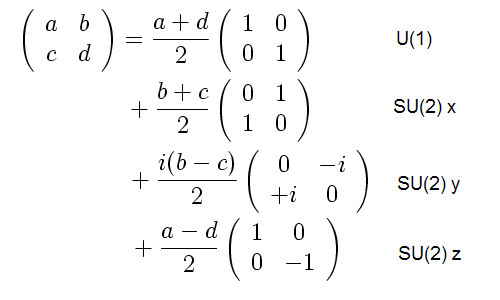I’m busily working on writing the CKM matrix in Kea’s form, that is, as a unitary matrix that is the sum of 1-circulant and 2-circulant matrices. With the MNS matrix this was easier because I could begin with a unitary matrix, but the CKM matrix is usually given in absolute value form.
Looking through the literature, I’ve found a beautiful paper that digs to the core of the unitarity problem for the CKM matrix: A new type fit for the CKM matrix elements, Petre Dita, hep-ph/arXiv:0706.3588:
Abstract: The aim of the paper is to propose a new type of fits in terms of invariant quantities for finding the entries of the CKM matrix from the quark sector, by using the mathematical solution to the reconstruction problem of 3 x 3 unitary matrices from experimental data, recently found. The necessity of this type of fit comes from the compatibility conditions between the data and the theoretical model formalised by the CKM matrix, which imply many strong nonlinear conditions on moduli which all have to be satisfied in order to obtain a unitary matrix.
Dita’s CKM matrix estimate is:

This needs a little explaining, probably.
Continue reading








